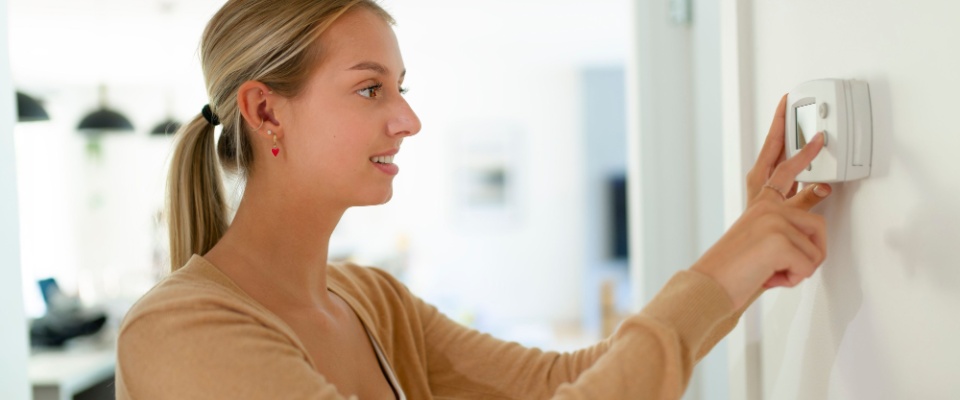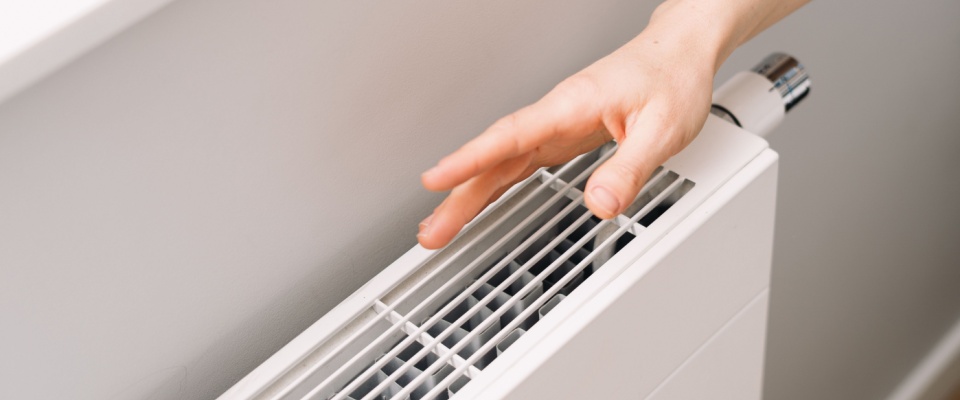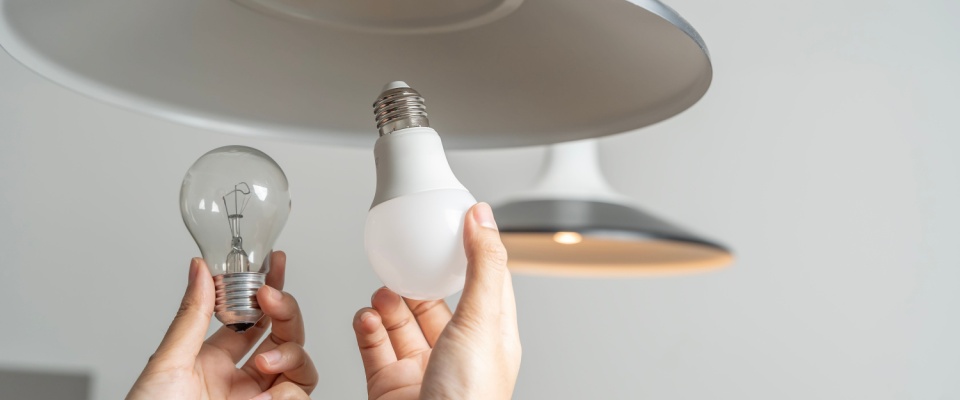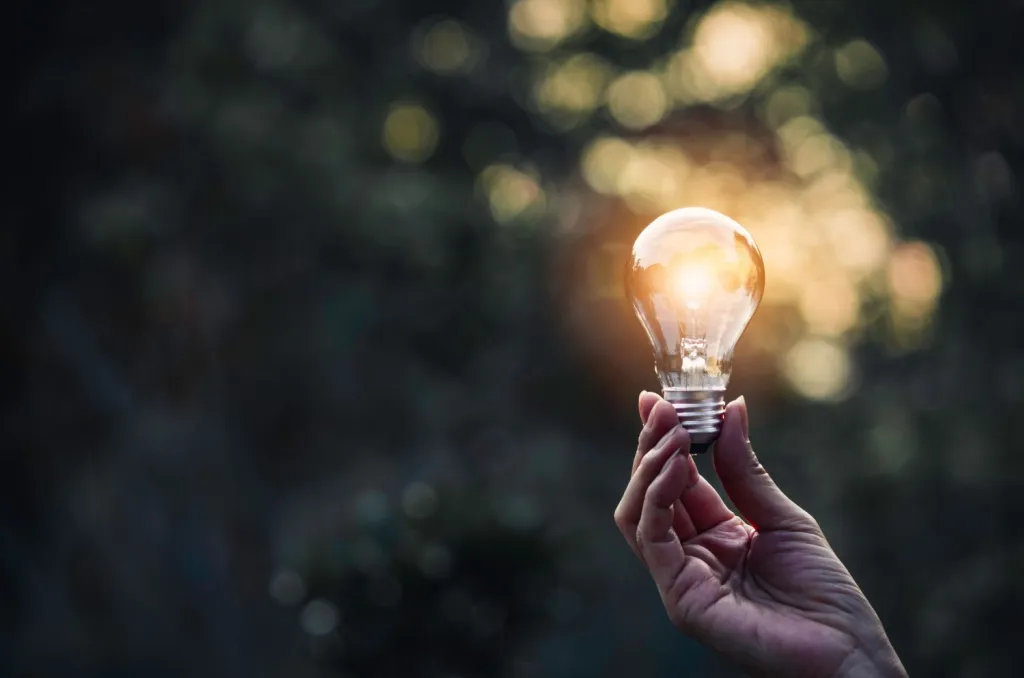Fall is the perfect time to prepare your apartment for rising electricity costs. As temperatures drop and heating systems kick in, bills can start to climb.
But boosting apartment energy efficiency doesn’t have to mean expensive upgrades or complicated changes. There are plenty of low-cost and even free ways to keep your apartment warm, optimize your electricity use, and lower your bills this fall.
We’ve selected ten simple ideas to make your space more energy-efficient and your wallet a little happier before winter hits.
1. Seal the drafts around windows and doors
Drafts are one of the biggest culprits of heat loss in apartments. If you feel a chill near your windows or under your door, warm air is probably escaping. Air leaks can account for 25% to 40% of heating and cooling energy use in homes.
You can easily fix that with a few budget-friendly materials:
- Pick up weatherstripping tape or removable caulk from a hardware store to seal gaps around window frames.
- For doors, use a rolled-up towel at the base to block cold air.
2. Adjust the thermostat (smartly)
The U.S. Department of Energy estimates that turning your thermostat down by 7 to 10°F for eight hours a day can save up to 10% a year on heating. These small adjustments to your heating habits can make a big difference:
- If you have control over your thermostat, try setting your heat just a few degrees lower than usual and layering up with a hoodie or warm socks instead.
- If your apartment allows it, consider getting a smart thermostat (some models plug into the wall and don’t require permanent installation). They learn your habits and can automatically reduce heating when you’re not home.

3. Unplug electricity drainers
Even when you’re not using them, electronics like TVs, game consoles, and microwaves continue to use small amounts of electricity, a process called "phantom energy." You can save money each month by unplugging these devices when you’re not using them or connecting them to a smart power strip that you can easily turn off.
This is an easy step that makes your apartment more efficient year-round, not just in the fall.
4. Make the most of natural light
Fall sunlight is softer but still strong enough to help naturally warm your apartment. Here are some ways to get the most out of natural light:
- Open your curtains or blinds during the day to let the sun rays in, especially on south-facing windows. At night, close them to trap that warmth inside.
- If your windows aren’t letting in much sunlight, consider curtains, especially thermal ones; curtains help insulate your windows and can prevent up to 10% of heat loss.
5. Reverse your ceiling fan direction
Most ceiling fans have a small switch that reverses the direction of the blades. In summer, fans should spin counterclockwise to push cool air down.
In fall and winter, flip the switch on the side of the fan so they spin clockwise. This helps circulate warm air that collects near the ceiling back down into the room.
6. Keep your heater clear and maintained
As temperatures drop, your heating system becomes the heart of your apartment’s comfort. Here’s what you should check:
- If your apartment has baseboard heaters or vents, make sure they’re not blocked by furniture, rugs, or curtains.
- Check that the vents are clean, as dust and debris can reduce airflow and make your heater work harder.

If your heating system isn’t working properly, let your property manager know. It’s their responsibility to keep it maintained, and reporting issues early can prevent bigger electricity losses later.
7. Cook and bake strategically
Small kitchen habits can make a difference in overall apartment energy efficiency:
- After baking, leave the oven door slightly open (once it’s turned off) to let the residual heat spread through your kitchen.
- Try using lids on pots and pans to trap heat while cooking. This helps your stove use less energy to get the job done.
8. Use rugs to insulate floors
Bare floors can let heat escape, especially if your apartment has tile or hardwood. Adding area rugs or carpet runners not only makes your space feel cozier but also acts as an extra layer of insulation. This is an especially useful trick if you live on the ground floor.
9. Review your washing habits
Laundry can be another hidden electricity drain. Here are some low-cost ways to make your apartment more energy-efficient:
- Switch to cold water washes whenever possible (most modern detergents work just as well in cold water).
- If your building allows, hang dry heavier clothes like jeans or sweaters on a drying rack in the laundry room, ensuring the room is well-ventilated. Not only does it save energy, but it also extends the life of your clothes.
10. Talk to your landlord about energy upgrades
If your apartment still feels drafty or inefficient, talk to your landlord about simple upgrades like LED lighting, better insulation, or weatherproofing windows. Many of these changes can benefit both of you, reducing the building’s overall electricity use while lowering your bills.

Track your progress and maximize savings
Here are some steps you should take to track how your energy usage and savings are going:
- Measure your baseline. Before implementing these changes, note your current monthly energy usage from your utility bill. This helps you track improvement and identify which strategies work best in your apartment.
- Prioritize high-impact changes. Start with draft sealing, thermostat adjustments, and phantom energy elimination. These typically provide immediate benefits with the least effort.
- Seasonal timing matters. Consider the following timeline:
- Mid-October: Implement weatherproofing, heating system optimizations, and ceiling fan reversals.
- Late October: Add insulation elements like rugs and thermal curtains.
- November: Fine-tune thermostat settings and heating habits.
With these affordable changes in your daily habits, you can boost apartment energy efficiency while staying comfortable. So, before the winter chill sets in, don’t forget to give your space a little energy-saving tune-up.




